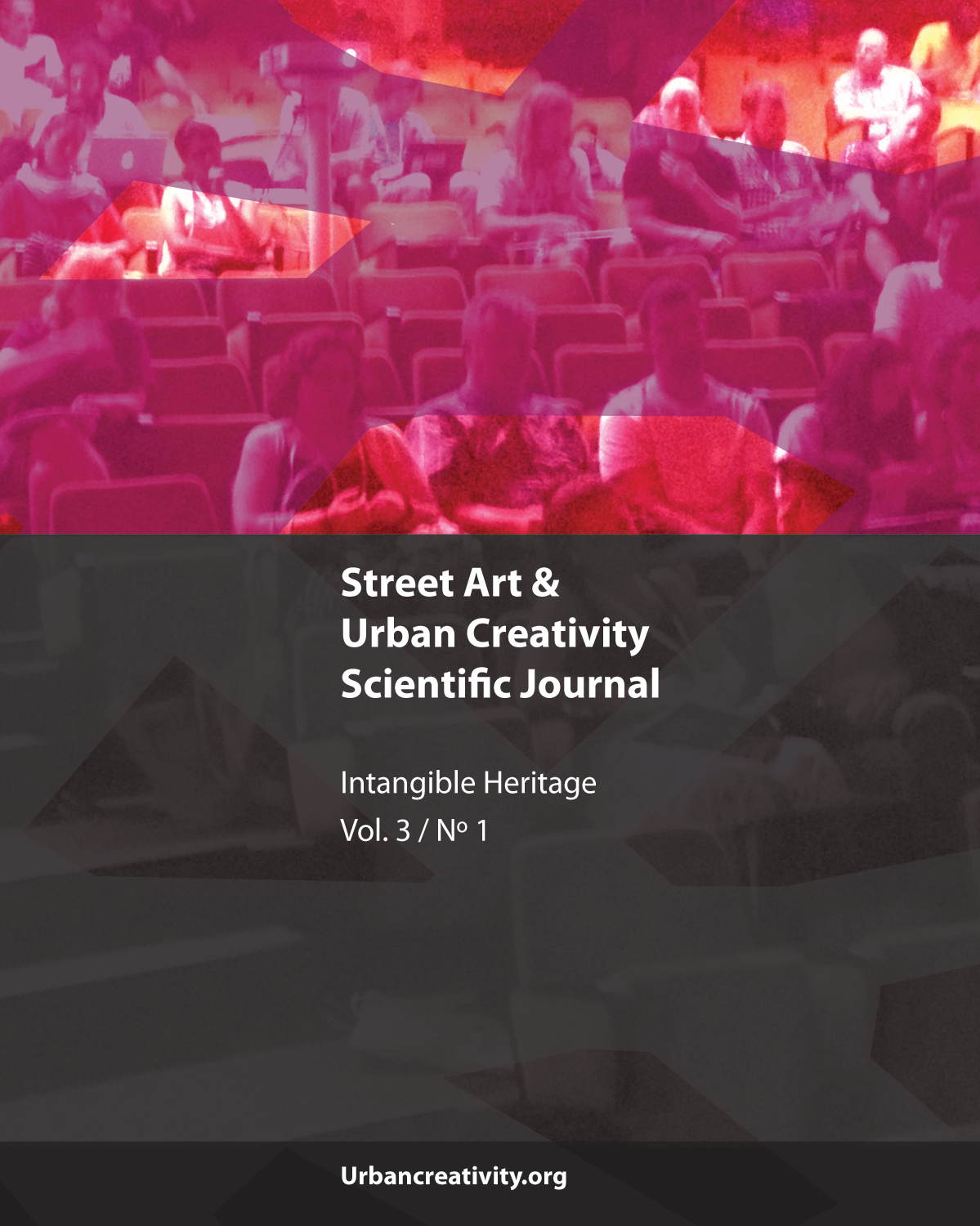When documenting doesn’t cut it:
Opportunities and alternatives to intangible conservation
DOI:
https://doi.org/10.25765/sauc.v3i1.63Keywords:
Urban Art, Contemporary Art, Intangible Conservation, Tangible Conservation, Conservation, RestorationAbstract
Conservation of urban art is a subject in vogue in contemporary academic research. It may seem like a new topic of discussion – a new field of understanding – but the preservation of the ideas and forms of urban art practices has certainly been present since the very beginnings of graffiti and street art. Although generally practices related to urban art are considered ephemeral, when an artwork, style or general practice acquires value, conservation is the only way to prolong its idea – its life. The proceedings to allow that statement could be twofold: The first one is using intangible conservation mechanisms as simple as keeping the idea by photographic and video records; promoting spaces for the practices; documentation of styles, forms, ideas, states; developing new researches, and so on. The second, main topic of discussion in this paper, is the application of more intricate mechanisms when wider objectives are presented because of the significant importance of the artwork for the public, based on trying to keep the materiality of the artwork in addition to maintaining its idea. In these cases, tangible conservation mechanisms should be applied. This paper questions the limits of intangible conservation and the possibilities that tangible conservation could offer in the physical and conceptual preservation of the alternative contemporary art practices that involve urban art. Nevertheless, it is not forgotten that the application of conservation-restoration mechanisms could be questioned, so additionally to the alternatives that tangible conservation offers, the criteria used for its general application will be reviewed.
Downloads
Global Statistics ℹ️
|
167
Views
|
197
Downloads
|
|
364
Total
|
|
Downloads
Published
How to Cite
Issue
Section
License
Those authors who publish in this journal accept the following terms:
-
Authors retain copyright.
-
Authors transfer to the journal the right of first publication. The journal also owns the publishing rights.
-
All published contents are governed by an Attribution-NoDerivatives 4.0 International License.
Access the informative version and legal text of the license. By virtue of this, third parties are allowed to use what is published as long as they mention the authorship of the work and the first publication in this journal. If you transform the material, you may not distribute the modified work. -
Authors may make other independent and additional contractual arrangements for non-exclusive distribution of the version of the article published in this journal (e.g., inclusion in an institutional repository or publication in a book) as long as they clearly indicate that the work was first published in this journal.
- Authors are allowed and recommended to publish their work on the Internet (for example on institutional and personal websites), following the publication of, and referencing the journal, as this could lead to constructive exchanges and a more extensive and quick circulation of published works (see The Effect of Open Access).













